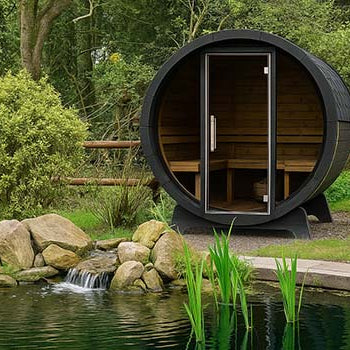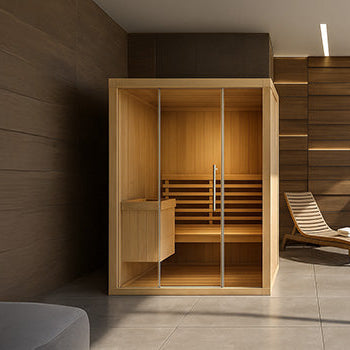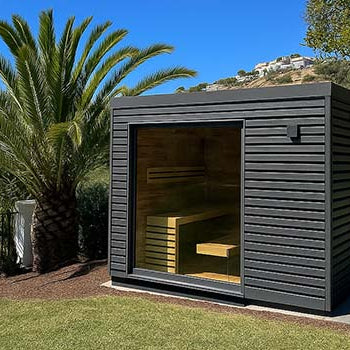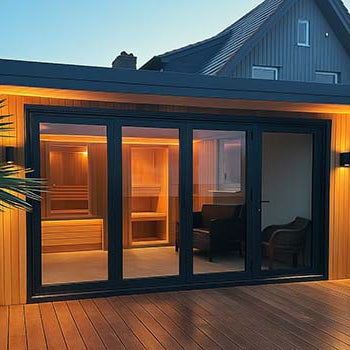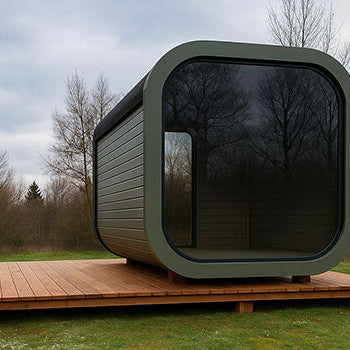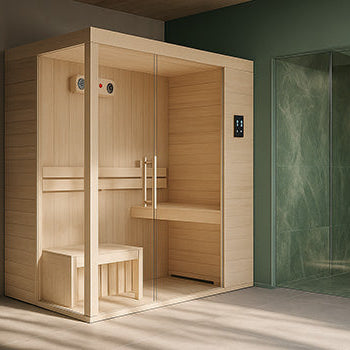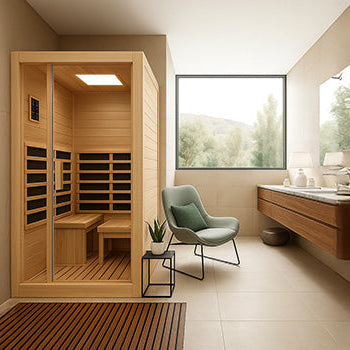Short answer: the one that fits your space, wellness goals, and comfort level—whether that’s an indoor heat haven or a scenic outdoor escape.
Some people love the deep sweat of a wood-fired room. Others swear by infrared’s gentle heat or the dewy mist of a steam room.
We’ll walk you through the top sauna types so you can choose the one that makes you feel good and get used to. Let’s find your match.

Finding the Best Sauna Type for Your Needs
Why "Best" is Subjective: Key Personal Considerations (Goals, Preferences, Budget)
There’s no universal answer to what makes a sauna “the best.”
It depends on why you want one.
An infrared sauna might be ideal if you’re looking for post-workout muscle recovery.
Want to recreate the spa-at-home vibe? A steam room could be your pick.
Crave that intense, full-body heat? You’re probably a traditional sauna fan at heart.
Also, think about space—indoor saunas suit small flats or bathrooms, while outdoor saunas are perfect for garden lovers.
And of course, your budget matters. There’s something for every price range—you just need to match the features to your priorities.
Exploring Traditional Saunas (Electric/Wood-Fired)
How They Work: Heating the Air
Traditional saunas heat the air using either an electric stove or a wood-burning one.
Hot stones sit on the heater, absorbing and radiating warmth.
Splash water on the rocks and you’ll get a hit of soothing steam.
It’s that classic, steamy sensation you probably picture when you think of a sauna.
The whole room heats up evenly, creating an immersive experience.
Characteristics: High Heat, Low Humidity (Variable Steam)
Expect serious heat, usually between 70°C and 100°C.
By default, they’re dry, but the moment you add water to the stones, the humidity spikes.
You’re in control of how intense the steam feels.
Wooden interiors add to the traditional charm. Benches at different heights let you choose your comfort zone—hotter at the top, cooler below.
Pros & Cons (Authentic Feel, Social, Warm-up Time, Energy Use)
Pros:
-
Delivers the classic sauna experience with the option to add steam
-
Feels deeply relaxing and ritualistic
-
Great for social use—perfect for pairs or groups
-
Beautiful wooden design adds a spa-like atmosphere
Cons:
-
Takes longer to heat up compared to infrared
-
Higher energy use for electric models
-
Wood-fired options need manual maintenance
-
Needs more ventilation and installation space
Browse our full Traditional Indoor Saunas and Traditional Outdoor Saunas for authentic heat therapy options.
Understanding Infrared Saunas

How They Work: Heating the Body Directly with Infrared Light
Infrared saunas work differently—they don’t heat the air.
Instead, they use infrared light to warm your body directly, kind of like the sun without the UV damage.
This makes them feel gentler, even though you’ll still sweat buckets.
Many people love them for the deep heat they deliver without the stuffy air.
It’s a quieter, more personal type of session.
Characteristics: Lower Ambient Heat, Dry Heat
You’ll notice the air doesn’t feel overwhelmingly hot.
Temperatures usually range between 40°C and 60°C, so they’re more comfortable for longer sessions.
No steam, no humidity—just dry, radiant warmth.
They’re often compact too, making them perfect for bedrooms, gyms, or even home offices.
And yes, you can scroll your phone without fogging it up.
Pros & Cons (Faster Warm-up, Energy Efficiency, Tolerability, Different Heat Sensation)
Pros:
-
Quick to heat up and easy to use
-
Lower running costs
-
More comfortable for those sensitive to heat
-
Ideal for muscle soreness, joint relief, and daily detox
Cons:
-
Doesn’t offer the steam element some people love
-
May not feel “hot enough” for sauna purists
-
Less social—better suited to solo sessions
Explore our Infrared Indoor Saunas and Infrared Outdoor Saunas for compact, energy-saving solutions.
Considering Steam Rooms (Wet Saunas/Turkish Baths)
How They Work: High Humidity Heat via Steam Generator
Steam rooms are all about moisture.
They use a steam generator to fill the room with thick, warm mist, creating 100% humidity.
The air might be cooler than in saunas, but it feels just as intense because of the dampness.
Every inhale feels like a facial for your lungs.
It's a totally different vibe from dry saunas.
Characteristics: Moderate Heat, High Humidity
Steam rooms typically stay around 40°C to 45°C, but the moisture makes the heat feel much stronger.
The environment is sealed and tiled to handle the constant dampness.
It’s especially soothing for your skin and sinuses.
Many people say they leave glowing and breathing easier.
It’s the kind of sweat session that feels more spa than gym.
Pros & Cons (Respiratory Benefits, Skin Hydration, Different Environment)
Pros:
-
Brilliant for skincare and respiratory relief
-
Helps open pores and hydrate skin
-
Excellent for easing congestion and stress
-
Creates a spa-style environment at home
Cons:
-
High humidity might feel too intense for some
-
Needs waterproofing and special installation
-
Regular cleaning is essential to keep it fresh
Side-by-Side Comparison: Key Differences Summarized
Heat Source and Feel
-
Traditional: Heats air and stones—classic sauna vibe
-
Infrared: Heats your body directly—gentle but effective
-
Steam Room: Fills the space with steam—feels moist and spa-like
Temperature and Humidity Levels
-
Traditional: 70–100°C, adjustable steam
-
Infrared: 40–60°C, completely dry
-
Steam Room: 40–45°C, 100% humidity
Primary Claimed Benefits
-
Traditional: Deep detox, improved circulation, muscle relaxation
-
Infrared: Joint relief, energy efficiency, low-heat comfort
-
Steam Room: Clearer breathing, skin hydration, spa-like calm
Practicalities (Warm-up, Energy, Installation)
-
Traditional: Slower heat-up, uses more energy, needs more space
-
Infrared: Quick to start, low running cost, easy to fit at home
-
Steam Room: Requires waterproof design and maintenance effort
Not sure where to begin? Start by exploring our Indoor Sauna Collection or discover the beauty of Outdoor Barrel Saunas for a timeless garden retreat.
Conclusion: How to Choose the Right Sauna Experience for You

There’s no “best sauna” that fits everyone.
The best one is the one that fits your lifestyle, your space, and your body.
Love the idea of ritual, intense heat, and wooden benches? Traditional all the way.
Want quick, easy, everyday wellness? Go infrared.
Craving steamy, skin-loving sessions with a spa feel? Steam room is your match.
Think about where you’ll put it, how often you’ll use it, and what benefits matter most.
Once you know what you want out of the experience, choosing becomes simple.
Because in the end, the right sauna isn’t just about heat—it’s about feeling good.
And when you find one that works for you, you’ll wonder how you ever relaxed without it.
